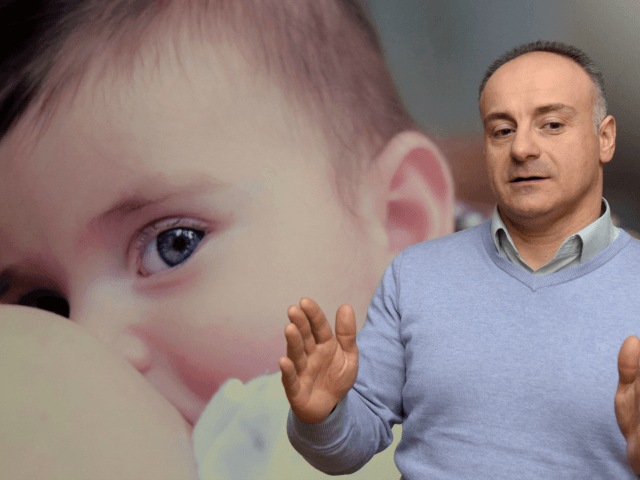(AFP) – Ani Kirakosyan says she is afraid of getting pregnant because if the ultrasound shows the foetus is a girl she will have to consider having an abortion.
In ex-Soviet Armenia — where families traditionally prefer sons — women are often pressured to have sex-selective abortions to get rid of girl babies.
“Relatives were consoling me when I gave birth to my first daughter,” said Kirakosyan, a 27-year-old resident of the Armenian capital, Yerevan.
“But when my second daughter was born, my mother-in-law told me that there must be no more girls, that I must finally bear my husband a son.”
The majority-Christian Caucasus country of some three million has the third highest rate of abortions of female foetuses in the world, a figure that rose sharply after the breakup of the Soviet Union.
The United Nations Population Fund (UNFPA) has reported that there were 114 boys born to 100 girls in 2012. The natural norm would be 102-106 male births to 100 female ones.
Sex-discriminatory abortions become more prevalent with second and subsequent children, and account for around 1,400 unborn girls each year.
“In 10 to 20 years, we will face a shortage of women and — combined with a dramatic decline in fertility rates — that will lead to a serious demographic crisis,” warned Garik Hayrapetyan, UNFPA Armenia’s assistant representative.
“By 2060, some 100,000 potential mothers will not have been born in Armenia. We will become a society of single men.”
Armenia trails only China, which ended its one-child limit a year ago, and its Caucasus neighbour, majority-Muslim Azerbaijan, where 53 percent of newborn children were boys in the first quarter of 2016, according to official figures.
Some analysts have linked the shared trend for sex-selective abortions in Armenia and Azerbaijan to their violent territorial dispute since 1994 over the Nagorny Karabakh region, suggesting it has promoted a sense of insecurity and a desire for male defenders.
The UNFPA attributed Armenia’s sex-discriminatory abortions to “patriarchal structures” and a trend for smaller families, as well as easy access to prenatal scans and abortions.
– ‘More backstreet abortions’ –
Abortion is still the primary means of family planning in Armenia, as it was in the Soviet era, and it is available free of charge on the state health service.
In mid-2016, the Armenian parliament adopted legislation aimed at reversing the female foeticide trend.
The new measures include doctors compulsorily questioning women on their motives for wanting an abortion and refusing those driven by gender selection.
The legislation also bars terminations after 12 weeks unless there is a risk to a woman’s health, she was raped or is a single mother.
But Armenian women’s rights groups have denounced the new legal measures, saying they will not work in a patriarchal society and will only lead to more illegal and unsafe abortions, endangering women’s health.
“If we forbid abortions, there will be more backstreet abortions and higher female mortality rates,” Anush Poghosyan of the Yerevan-based Women’s Resource Centre told AFP.
“We have to address the problem’s origin — that is patriarchal mentality and widespread poverty — and not its consequence,” she said.
“If women and men were given equal opportunities, if a woman could be as successful as a man, as influential and as financially independent, no parent would distinguish between having a son or a daughter.”
The UNFPA’s Hayrapetyan said that recent media discussion of the problem has encouraged debate about the reasons behind cultural norms.
“The paradox in Armenian society is that many people may not want having a daughter before she is born, but once she is here, a daughter is just as loved and cherished as a son,” he said.

COMMENTS
Please let us know if you're having issues with commenting.